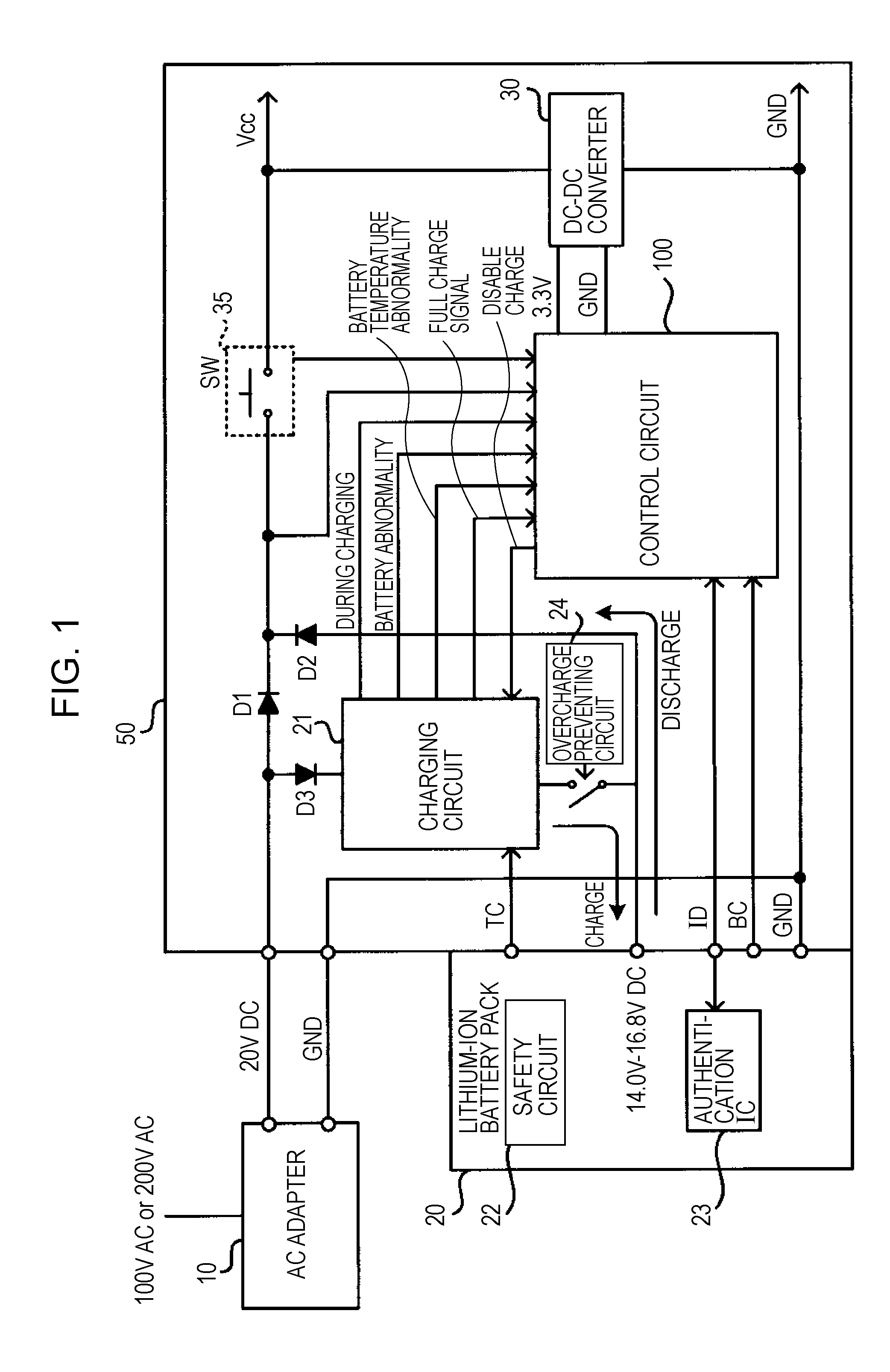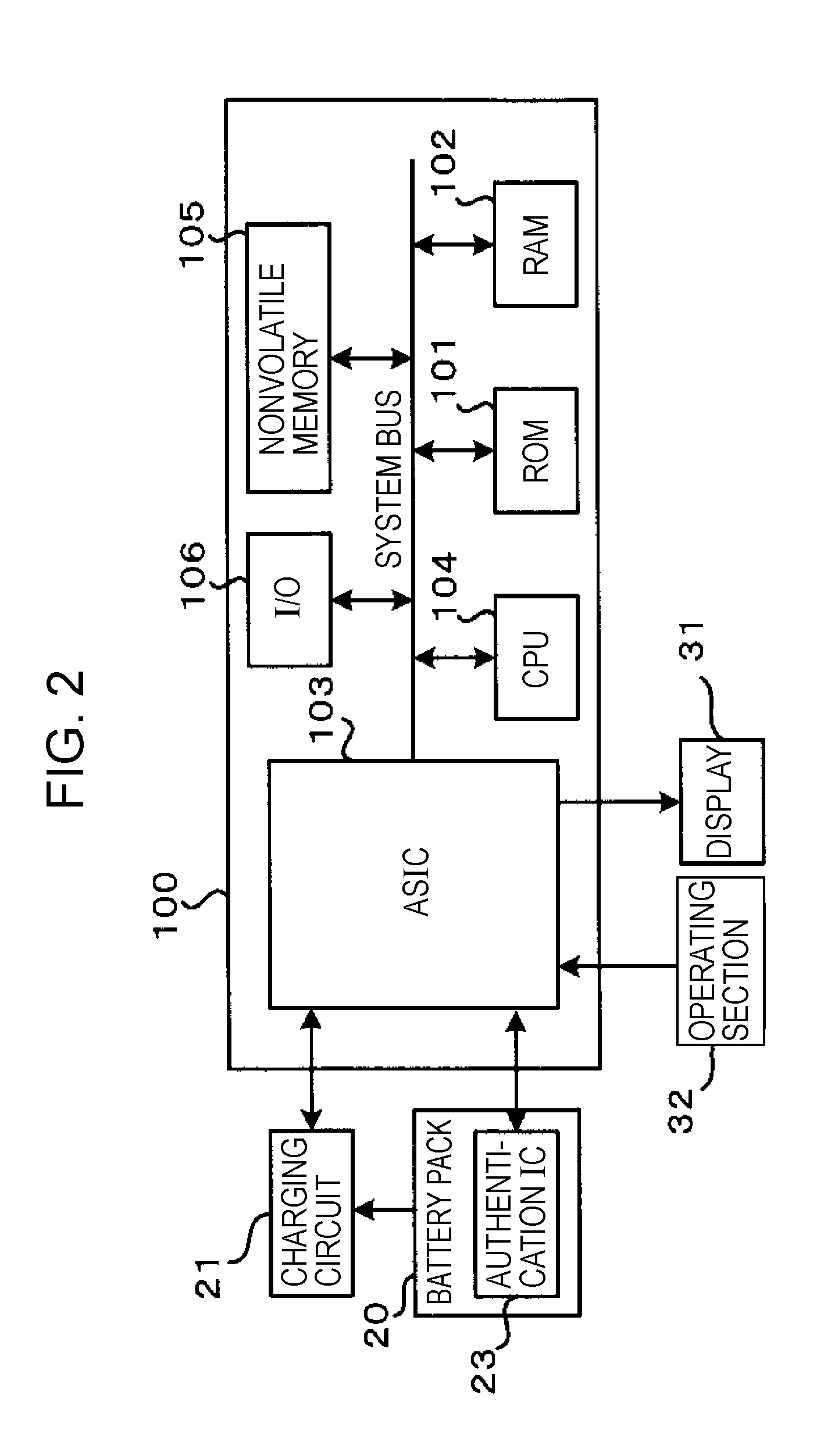Electronic device, method for controlling the same, and program for the same
a technology of electronic devices and programs, applied in the direction of safety/protection circuits, instruments, transportation and packaging, etc., can solve the problems of abnormal heat generation, ignition, or rupture of electronic devices, and poor quality of copy or imitation battery packs without protection mechanisms,
- Summary
- Abstract
- Description
- Claims
- Application Information
AI Technical Summary
Benefits of technology
Problems solved by technology
Method used
Image
Examples
first embodiment
[0049]FIG. 4 is a flowchart for a control procedure for the electronic device 50 which is executed at power-on. When the electronic device 50 is at power-on, first, it is determined whether the battery pack 20 (hereinafter, also referred to as a battery) is connected to the electronic device 50 so as to supply power thereto (step S1). This can be determined from the terminal BC (see FIG. 1) of the battery pack 20. When the battery pack 20 has not been connected to the electronic device 50 so as to supply power (No in step S1), the procedure is finished. On the other hand, when the battery pack 20 has been connected to the electronic device 50 so as to supply power (Yes in step S1), then authentication of the battery pack 20 is tried by the authentication IC 23 to determine whether the battery pack 20 is the genuine battery pack 20a (step S2).
[0050]When the battery pack 20 is successfully authenticated, the battery pack 20 can be determined to be the genuine battery pack 20a almost ...
second embodiment
[0066]FIG. 7B shows an icon in the case where the electronic device 50 is operating by the power from the battery pack 20. For example, it is the case where the battery pack 20 is the genuine battery pack 20a or the third-party battery pack 20b when the power of the electronic device 50 is turned on in a state in which only the battery pack 20 is connected to the electronic device 50 so as to provide power or, alternatively, when charging to the third-party battery pack 20b is disabled (second embodiment), the third-party battery pack 20b is not charged even if both to the AC adapter 10 and the third-party battery pack 20b are connected, so that the same icon is displayed.
[0067]FIG. 7C shows an icon that flashes while the electronic device 50 is operated by the power from the AC adapter 10 and the battery pack 20 is charged. For example, this is an icon in the case where the genuine battery pack 20a is connected together with the AC adapter 10 and is charged or the third-party batte...
PUM
 Login to View More
Login to View More Abstract
Description
Claims
Application Information
 Login to View More
Login to View More - R&D
- Intellectual Property
- Life Sciences
- Materials
- Tech Scout
- Unparalleled Data Quality
- Higher Quality Content
- 60% Fewer Hallucinations
Browse by: Latest US Patents, China's latest patents, Technical Efficacy Thesaurus, Application Domain, Technology Topic, Popular Technical Reports.
© 2025 PatSnap. All rights reserved.Legal|Privacy policy|Modern Slavery Act Transparency Statement|Sitemap|About US| Contact US: help@patsnap.com



